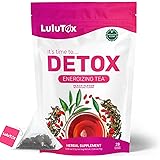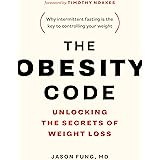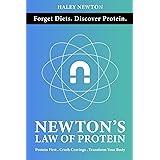Unlock Your Potential: Master the 7-Minute High-Intensity Workout for Weight Loss and Toning
Are you looking for an efficient way to boost your fitness, burn fat, and tone your body without spending hours at the gym? The video above offers a fantastic starting point for a high-intensity, 7-minute workout that can truly transform your routine. It provides direct instructions, guiding you through a series of exercises designed to deliver maximum results in minimal time. This short burst of activity aligns with proven scientific principles, making it a powerful tool for your health journey.
Many people find themselves short on time. A demanding work schedule or family commitments can make long workouts seem impossible. This is where a strategic, intense routine like the seven-minute high-intensity workout shines. It removes common barriers, letting you fit effective exercise into even the busiest days. Embracing this approach helps you stay consistent, which is crucial for achieving your fitness goals. Consistency truly acts like a steady drip that fills a bucket, eventually leading to significant change.
The Science Behind the Swift Sweat: Why 7 Minutes Works
The concept of a powerful, short workout might seem counterintuitive. However, groundbreaking research supports its efficacy. A significant study from McMaster University highlights that just seven minutes of high-intensity exercise can be sufficient. This method effectively targets fat burning, strengthens muscles, and improves overall health. It proves that quality can often outweigh quantity in the realm of physical activity.
This effectiveness stems from a principle known as high-intensity interval training, or HIIT. HIIT involves short, intense bursts of anaerobic exercise followed by brief recovery periods. This training style elevates your heart rate quickly and keeps it there. It sparks your metabolism, turning your body into a more efficient fat-burning machine. Think of it as lighting a small, powerful fire; it burns hot and leaves a lasting warmth.
Moreover, HIIT workouts trigger the “afterburn effect,” or EPOC (Excess Post-exercise Oxygen Consumption). This means your body continues to burn calories at an elevated rate long after your workout ends. Your body needs extra oxygen to recover and return to its resting state. This process demands energy, further contributing to your weight loss and fat-burning efforts. It’s like your body’s engine continues to hum even after you park the car.
Mastering Each Movement: Form for Fat Burning and Toning
Executing each exercise with proper form is paramount. The video emphasizes key correctional tips for every movement. Incorrect form can reduce effectiveness and increase injury risk. Think of proper form as the blueprint for building a strong house; without it, the structure could crumble.
Explosive Jumps (or Step Touches)
When performing the jump exercise, aim for a soft landing. Landing on your toes helps absorb impact, protecting your joints. If jumping feels too intense, opt for lateral step touches. This modification still elevates your heart rate and engages your muscles. Always keep your core tight, providing a stable foundation like a sturdy tree trunk.
Solid Wall Squats
For the wall squat, press your entire back flat against the wall. Distribute your weight through your heels, not your toes. This posture properly activates your glutes and quads. Avoid letting your knees drift inward or outward; they should track directly over your feet. Imagine your back is glued to the wall, forming a perfect straight line.
Powerful Push-ups
In push-ups, maintain a straight line from head to heels. Engage your abdominals and glutes to prevent your back from arching or your pelvis from lifting too high. If full push-ups are challenging, drop to your knees. Keep your gaze fixed on a spot on the floor to maintain neck alignment. Your body should move as one solid plank, like a perfectly aligned bridge.
Effective Crunches
When doing crunches, focus on lifting with your abdominal muscles, not straining your neck. Keep your lower back pressed firmly into the floor throughout the movement. This ensures maximum core engagement and spinal protection. Staring at the ceiling helps maintain proper head position. Your abs should do all the work, lifting your upper body like a strong lever.
Elevating Step-Ups
For step-ups, choose a stable surface for safety. Stare at a fixed point ahead to help with balance. Keep your back straight and your core contracted. If the chosen height is too much, use a lower object as a modification. Your lead leg should do the lifting, not your back, much like climbing a stair efficiently.
Foundation Squats
During squats, ensure your knees do not extend past your toes on the descent. Actively engage your core and glutes to keep your back straight. Bend your legs only as far as comfortable, reducing depth if needed. Visualize sitting back into an imaginary chair. This ensures your weight is properly distributed, protecting your knees.
Triceps Dips
When performing triceps dips, avoid fully extending your elbows at the top of the movement. This protects your arm joints from undue strain. Keep your abdominal muscles contracted for spinal stability. You can bend your knees to 90 degrees if you need a modification. Focus on feeling the burn in your triceps, the same way a spring contracts and expands.
Dynamic High Knee Runs
For high knee runs, focus on bringing your knees up towards your chest with speed. Land softly on your toes, minimizing heel contact. Maintain a straight torso by engaging your abdominals and staring forward. If the pace is too fast, simply slow it down. It’s like running in place but with exaggerated knee lifts, pumping energy into your body.
Balanced Front Lunges
In front lunges, step forward and lower your pelvis. Do not let your back knee touch the ground. Keep your abdominals tight to prevent your back from arching. If balancing is an issue, shorten your lunge stride. Your front knee should align over your ankle, maintaining a stable base, similar to a balanced scale.
Stabilizing Side Plank
The side plank demands strong core engagement. Keep your head, shoulders, hips, and feet aligned in a straight line. Avoid letting your hips sag or lift too high. If it’s too difficult, bend your bottom leg at 90 degrees and rest your knee and foot on the ground. Stare forward, not down, to maintain alignment. Your body should form a rigid, unyielding bridge.
Rotational Push-Ups
Push-ups with rotation add an extra challenge. Perform a standard push-up, then rotate your torso, lifting one arm towards the ceiling. Ensure your shoulders and pelvis move together during the rotation. Extend your arm fully upwards. If needed, rest your knees on the ground during the push-up phase. This movement opens up your chest, like a flower blooming.
Consistency is Key: Building a Lasting Fitness Habit
The video encourages repeating this powerful workout. While daily execution is ideal, aiming for three times a week is a great starting point. Regular engagement ensures your muscles adapt and grow stronger. This consistent effort fuels your metabolism, further assisting with fat burning. Think of building strength like weaving a tapestry; each thread adds to the overall pattern.
Making fitness a habit requires dedication. The benefits extend far beyond just weight loss and toning your body. Regular high-intensity exercise boosts your cardiovascular health. It improves your mood, reduces stress, and increases your overall energy levels. It’s like an investment that pays dividends in every area of your life.
To support your fitness journey, consider utilizing resources like a virtual personal trainer. Many apps provide guidance and track your progress. Joining a fitness community also offers motivation and accountability. These tools act as a compass and a cheering squad, helping you navigate and stay committed. Embark on your 7-minute high-intensity workout routine today and witness the powerful changes.











